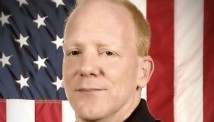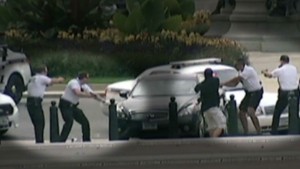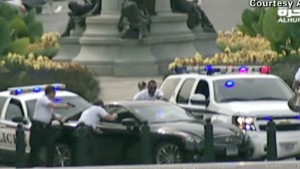Editor's note: Richard Weinblatt is a former police chief and dean of the School of Public and Social Services at Ivy Tech Community College in Indianapolis.
(CNN) -- The images filled the screen. A black car hitting barricades at the White House and on Capitol Hill, marked police cars being rammed, and the popping sounds of shots fired. More images rolled in, of heavily armed United States Capitol Police officers and of tourists running with scared and confused expressions.
In the aftermath of the scene that unfolded Thursday, a Connecticut woman is dead and a 1-year-old girl is in protective custody. The natural question people are asking is: Was it necessary for the police to shoot?
Washington Metropolitan Police Chief Cathy Lanier said that, yes, officers of the Capitol Police and Secret Service acted within commonly accepted use-of-force policies and practices in reaction to an intentional series of violent acts.
 Richard Weinblatt
Richard Weinblatt But some have wondered whether police overreacted in this case. This is a question that comes up every time there is a shooting by police.
In fact, many studies have found that police use force less often than the public realizes. For example, a 12-month study by the U.S. Bureau of Justice Statistics found that only 1.4% of people who had contact with the police had force used or threatened to be used against them.
I certainly concede that sometimes bad officers do bad things, and occasionally good officers do bad things accidentally. However, I also have found that most officers are honorable men and women making split-second decisions while trying to serve their communities.
So how should you judge the use of force by law enforcement officers?
Consider reasonableness: Police officers are trained to quickly assess possible threats. Force, particularly deadly force (with firearms, in this case), may be used if officers can explain their perception of the physical threats that put them and/or others at substantial risk of serious bodily injury or death. We can't Monday-morning quarterback the officers based on information that comes out later. We can only look at what a reasonable officer knew or should have known, and did or should have done, in a given situation.
 Woman killed in D.C. chase identified
Woman killed in D.C. chase identified  Fmr. FBI: Police acted appropriately
Fmr. FBI: Police acted appropriately  Photojournalist of Capitol chase speaks
Photojournalist of Capitol chase speaks Departmental policies and police training in the United States reflect the "objective reasonableness" principle put forth in the U.S. Supreme Court's 1989 Graham v. Connor decision, which applies a three-part test to assess the seriousness of the offense, the suspect threat, and the suspect's resistance or evasiveness.
And let's also consider facts, not emotional spin. Even though at first blush it appears to be a justified shooting, there should be no rush to final judgment in either direction before an examination of the facts in a fair and impartial investigation. As Lanier indicated in her press conference Thursday night, the Metropolitan Police will be investigating, with support from the Capitol Police and Secret Service.
In the wake of last month's Naval Yard shooting, and with the specter of other past violent acts -- such as the shooting of two heroic U.S. Capitol Police officers by a man who breached security in July 1998 -- law enforcement in Washington has been on heightened alert.
Cars can be used for delivering explosive devices. And let's not forget, as at least two injured federal officers experienced in this incident: The car itself is a 2,000-pound weapon that can cause serious injury or death when used as a battering ram.
Would a reasonable officer -- faced suddenly with a driver trying to ram barricades at high-profile targets like the White House, ramming police cars and injuring uniformed officers repeatedly -- perceive a serious offense, threat, or evasiveness?
Whether the driver was mentally ill was not a factor that the officers had the luxury of contemplating as they quickly assessed the threat and decided on a course of action.
Pending the final facts, it appears that all three prongs of the "objective reasonableness" standard were present.
Follow us on Twitter @CNNOpinion.
Join us on Facebook/CNNOpinion.
{ 0 comments... read them below or add one }
Post a Comment